
Johan Christian Fabricius was a Danish zoologist, specialising in "Insecta", which at that time included all arthropods: insects, arachnids, crustaceans and others. He was a student of Carl Linnaeus, and is considered one of the most important entomologists of the 18th century, having named nearly 10,000 species of animals, and established the basis for the modern insect classification.

The carrot fly is a pest of gardens and farms, and mainly affects the crop of carrots, but can also attack parsnips, parsley and celery. It is a member of the family Psilidae.

Phasia hemiptera is a fly belonging to the family Tachinidae.
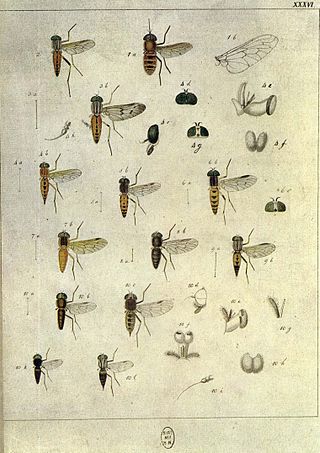
Pangonius is a genus within the horse-fly family (Tabanidae), often misspelled as Pangonia; Latreille originally published the name as Pangonius in 1802, emending it in 1804 to Pangonia, but the emendation is not valid under the International Code of Zoological Nomenclature. Some species that were earlier placed in this genus are now in the genus Philoliche.

Ectophasia is a genus of flies in the family Tachinidae.
Peteina is a genus of flies in the family Tachinidae.

Thelaira is a genus of flies in the family Tachinidae.
Zenillia is a genus of flies in the family Tachinidae.

Gonia is a genus of flies in the family Tachinidae.

Dexia rustica is a species of fly in the family Tachinidae.
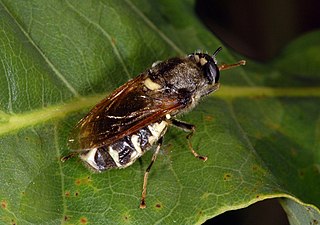
Stratiomys singularia, the flecked general, is a Palearcticspecies of soldier fly.

Chamaepsila is a genus of flies in the family Psilidae.

Philipomyia is a genus of horse fly belonging to the family Tabanidae subfamily Tabaninae.
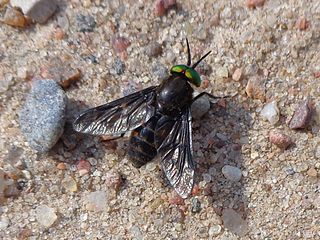
Chrysops sepulcralis is a species of 'horse flies' belonging to the family Tabanidae.
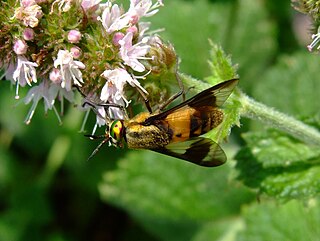
Chrysops viduatus is a species of 'horse flies' belonging to the family Tabanidae.

Terellia ceratocera is a species of tephritid or fruit flies in the family Tephritidae.
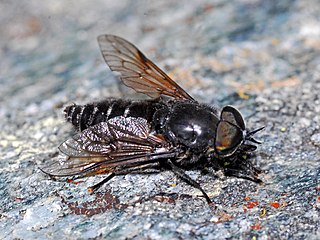
Dasyrhamphis is a genus of 'horse fly' belonging to the family Tabanidae subfamily Tabaninae.

Spilomyia saltuum is a species of Hoverfly in the family Syrphidae.
Total of 245 species either found or highly expected to be found in New York.
Lasiopa is a genus of flies in the family Stratiomyidae.















